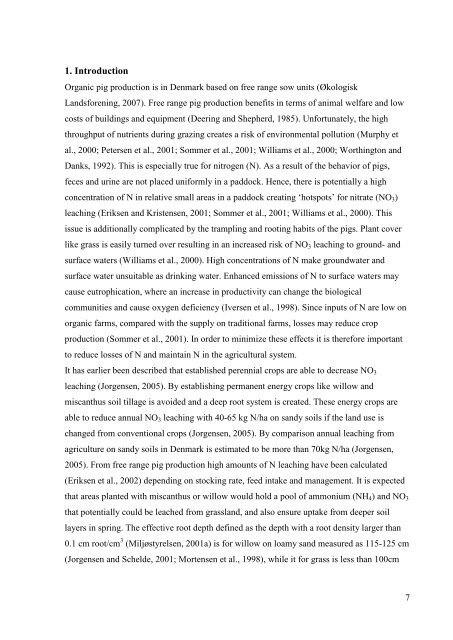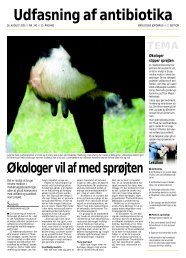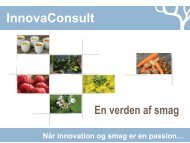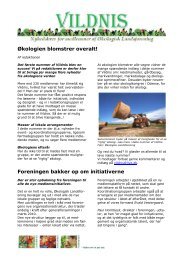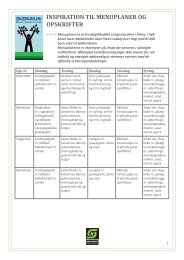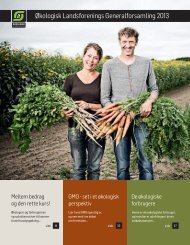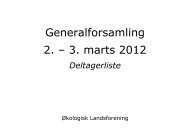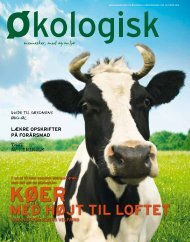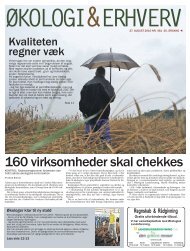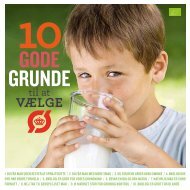Nitrogen distribution and potential nitrate leaching in a combined ...
Nitrogen distribution and potential nitrate leaching in a combined ...
Nitrogen distribution and potential nitrate leaching in a combined ...
Create successful ePaper yourself
Turn your PDF publications into a flip-book with our unique Google optimized e-Paper software.
1. Introduction<br />
Organic pig production is <strong>in</strong> Denmark based on free range sow units (Økologisk<br />
L<strong>and</strong>sforen<strong>in</strong>g, 2007). Free range pig production benefits <strong>in</strong> terms of animal welfare <strong>and</strong> low<br />
costs of build<strong>in</strong>gs <strong>and</strong> equipment (Deer<strong>in</strong>g <strong>and</strong> Shepherd, 1985). Unfortunately, the high<br />
throughput of nutrients dur<strong>in</strong>g graz<strong>in</strong>g creates a risk of environmental pollution (Murphy et<br />
al., 2000; Petersen et al., 2001; Sommer et al., 2001; Williams et al., 2000; Worth<strong>in</strong>gton <strong>and</strong><br />
Danks, 1992). This is especially true for nitrogen (N). As a result of the behavior of pigs,<br />
feces <strong>and</strong> ur<strong>in</strong>e are not placed uniformly <strong>in</strong> a paddock. Hence, there is <strong>potential</strong>ly a high<br />
concentration of N <strong>in</strong> relative small areas <strong>in</strong> a paddock creat<strong>in</strong>g ‘hotspots’ for <strong>nitrate</strong> (NO3)<br />
<strong>leach<strong>in</strong>g</strong> (Eriksen <strong>and</strong> Kristensen, 2001; Sommer et al., 2001; Williams et al., 2000). This<br />
issue is additionally complicated by the trampl<strong>in</strong>g <strong>and</strong> root<strong>in</strong>g habits of the pigs. Plant cover<br />
like grass is easily turned over result<strong>in</strong>g <strong>in</strong> an <strong>in</strong>creased risk of NO3 <strong>leach<strong>in</strong>g</strong> to ground- <strong>and</strong><br />
surface waters (Williams et al., 2000). High concentrations of N make groundwater <strong>and</strong><br />
surface water unsuitable as dr<strong>in</strong>k<strong>in</strong>g water. Enhanced emissions of N to surface waters may<br />
cause eutrophication, where an <strong>in</strong>crease <strong>in</strong> productivity can change the biological<br />
communities <strong>and</strong> cause oxygen deficiency (Iversen et al., 1998). S<strong>in</strong>ce <strong>in</strong>puts of N are low on<br />
organic farms, compared with the supply on traditional farms, losses may reduce crop<br />
production (Sommer et al., 2001). In order to m<strong>in</strong>imize these effects it is therefore important<br />
to reduce losses of N <strong>and</strong> ma<strong>in</strong>ta<strong>in</strong> N <strong>in</strong> the agricultural system.<br />
It has earlier been described that established perennial crops are able to decrease NO3<br />
<strong>leach<strong>in</strong>g</strong> (Jorgensen, 2005). By establish<strong>in</strong>g permanent energy crops like willow <strong>and</strong><br />
miscanthus soil tillage is avoided <strong>and</strong> a deep root system is created. These energy crops are<br />
able to reduce annual NO3 <strong>leach<strong>in</strong>g</strong> with 40-65 kg N/ha on s<strong>and</strong>y soils if the l<strong>and</strong> use is<br />
changed from conventional crops (Jorgensen, 2005). By comparison annual <strong>leach<strong>in</strong>g</strong> from<br />
agriculture on s<strong>and</strong>y soils <strong>in</strong> Denmark is estimated to be more than 70kg N/ha (Jorgensen,<br />
2005). From free range pig production high amounts of N <strong>leach<strong>in</strong>g</strong> have been calculated<br />
(Eriksen et al., 2002) depend<strong>in</strong>g on stock<strong>in</strong>g rate, feed <strong>in</strong>take <strong>and</strong> management. It is expected<br />
that areas planted with miscanthus or willow would hold a pool of ammonium (NH4) <strong>and</strong> NO3<br />
that <strong>potential</strong>ly could be leached from grassl<strong>and</strong>, <strong>and</strong> also ensure uptake from deeper soil<br />
layers <strong>in</strong> spr<strong>in</strong>g. The effective root depth def<strong>in</strong>ed as the depth with a root density larger than<br />
0.1 cm root/cm 3 (Miljøstyrelsen, 2001a) is for willow on loamy s<strong>and</strong> measured as 115-125 cm<br />
(Jorgensen <strong>and</strong> Schelde, 2001; Mortensen et al., 1998), while it for grass is less than 100cm<br />
7


